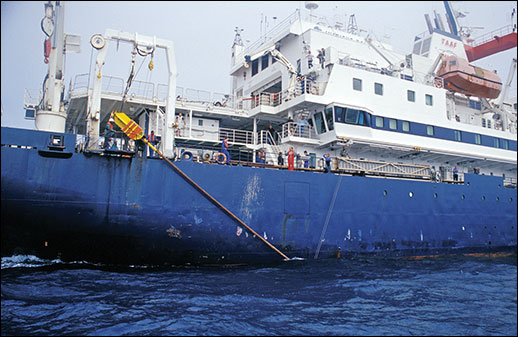|
Digging into the Bay's Ancient Past
December 2013 • Volume 12, Number 4

Credit: French Polar Institute IPEV
Michael W. Fincham
In October 2003, a little-known think tank in the Department of Defense quietly released a report warning that climate change could happen suddenly — so suddenly it could pose a major threat to our country's national security. The title of the Pentagon report was a mouthful: An Abrupt Climate Change Scenario and its Implications for United States National Security. Those implications included rising seas, flooded coastal cities, at least one drowned country, droughts, food shortages, failed states and fortress states. The report was never designed as a scientific prediction. It was a speculative effort by defense strategists to dramatize all the security threats the country would face if the climate suddenly shifted. Why was the Pentagon suddenly worried about abrupt climate change? Because new evidence from Greenland showed it had happened before. more . . .
Millions of years ago, during a time period known as the Miocene, crocodiles, giant sharks, and ancient whales plumbed the seas off the Maryland coast. Today, paleontologists like Stephen Godfrey are trying to build a better picture of what those prehistoric oceans would have looked like. Their windows to the past are Calvert and Stratford cliffs, which tower over the Bay, carrying a detailed record of the animals that lived on the Mid-Atlantic before humans. more . . . |
For as long as people have lived along Calvert Cliffs, these formations have slowly crumbled away, losing ground to erosion. Today, that erosion has left those living nearby to face tough questions: shoreline stabilization measures could help to slow the inevitable but may also ruin the value of the cliffs as a scientific and scenic resource. more . . . |
|